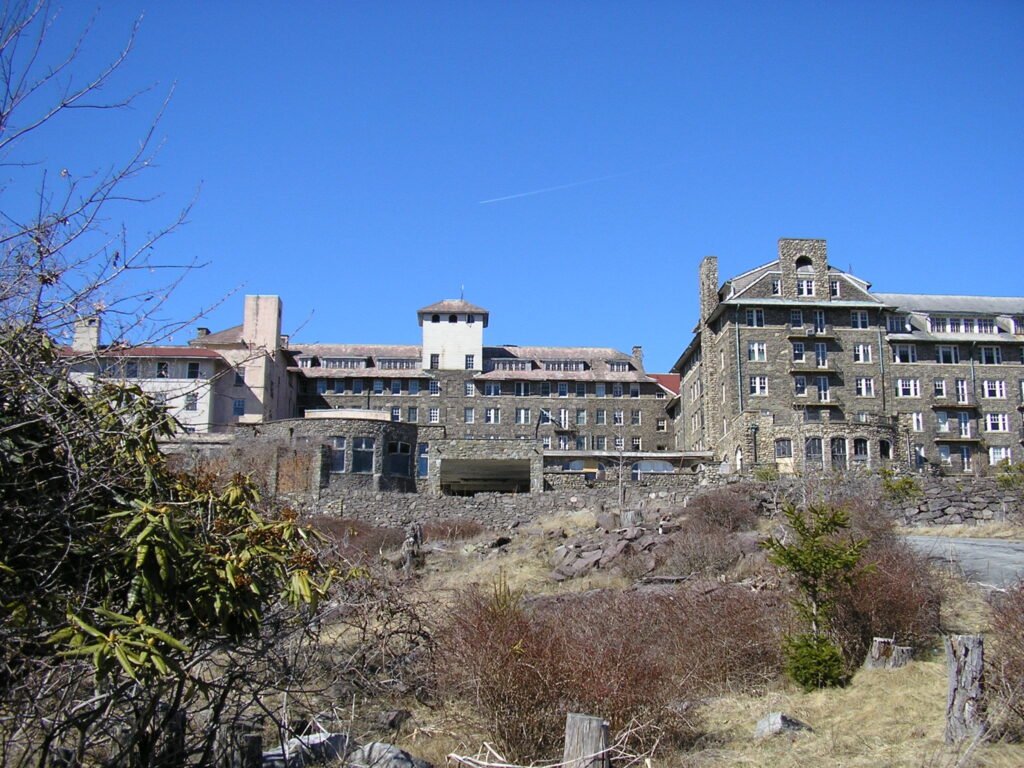
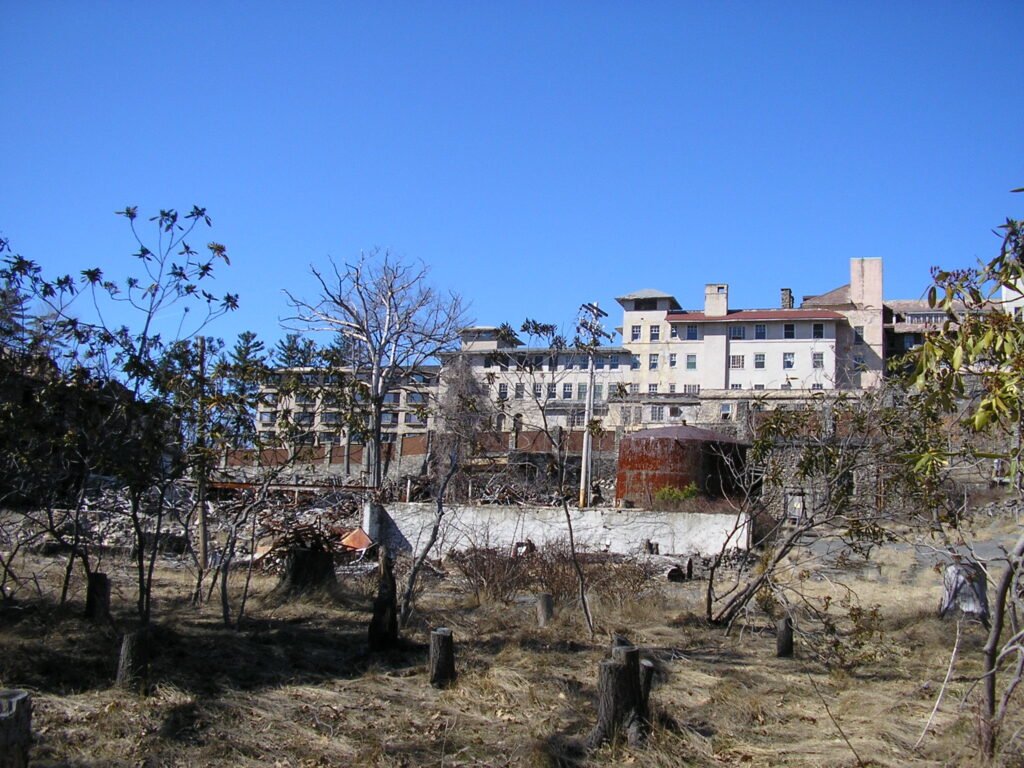
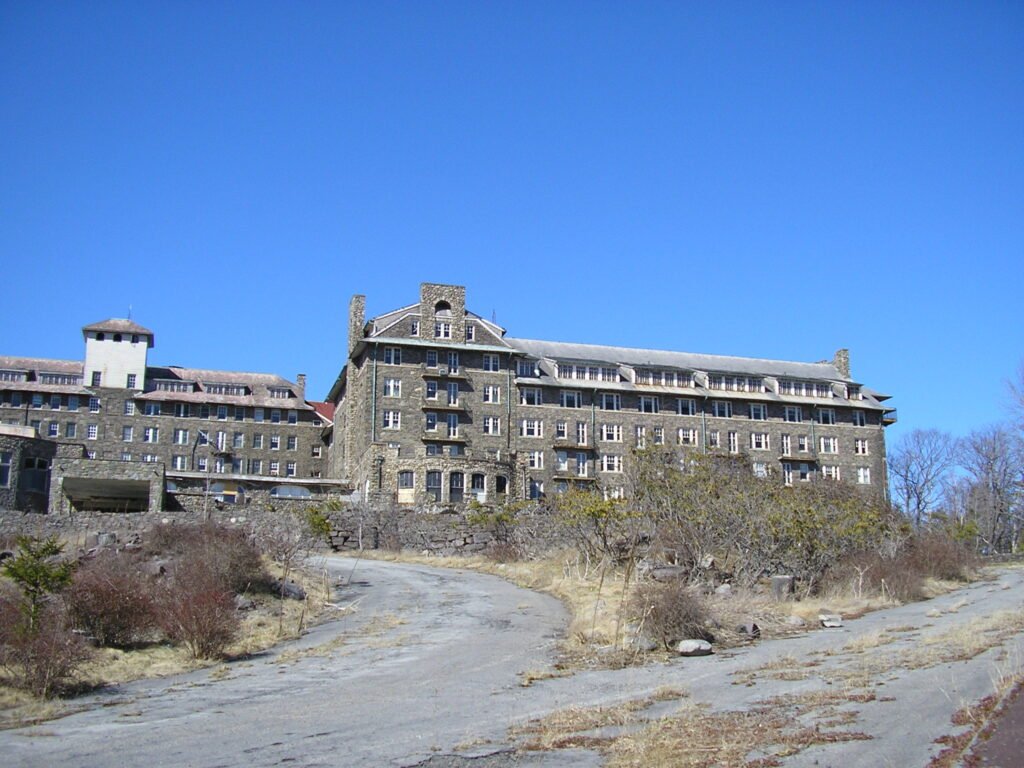
Nestled in the rolling Pocono Mountains of Northeastern Pennsylvania, The Inn at Buck Hill Falls once stood as a beacon of luxury and leisure. Founded in 1901 by a group of Quakers from Philadelphia, this retreat began as a modest 20-room wooden lodge, a simple escape into nature. Over the decades, it grew into a sprawling resort with over 400 rooms, boasting an indoor pool with a retractable glass roof, a grand north porch with sweeping mountain views, and a reputation as one of the top resorts in the country. But beneath its polished veneer, whispers of a darker history began to emerge—tales of ghosts, tragedy, and unexplained phenomena that have lingered long after the Inn’s doors closed in 1990. Today, though the building has been demolished, its haunted legacy endures in local lore. So, what’s the real story behind The Inn at Buck Hill Falls?
From Quaker Retreat to Resort Grandeur
The Inn’s story starts with a group of Friends, led by Charles F. Jenkins, who sought a peaceful haven amid the rugged beauty of the Poconos. What began as a rustic getaway soon transformed. By 1926, a massive stone structure replaced the original lodge, and the resort blossomed into a playground for the elite from New York and Philadelphia. Guests flocked to its 27-hole golf course, tennis courts, and Olympic-sized pool, while winter brought tobogganing and skiing. The Inn hosted notable figures like Helen Keller and Eleanor Roosevelt, who attended a 1935 conference there on housing and resettlement. For decades, it thrived as a symbol of elegance and escape.
But by the 1970s and 1980s, cracks appeared. Changing travel trends—cheaper airfare luring vacationers to farther-flung destinations—combined with financial woes and shifting ownership took their toll. The Inn shuttered in October 1990, leaving behind a grand but empty shell. And that’s when the ghost stories really took root.
Enter MTV’s Fear and the Birth of a Haunted Reputation
The Inn might have faded quietly into memory if not for MTV’s reality show Fear in 2000. The abandoned resort became a backdrop for the show’s sixth episode, where teenagers armed with cameras roamed its decaying halls, hunting for paranormal activity. MTV painted a chilling picture: 73 murders, a maid’s suicide, a room built on ley lines, and ghostly sightings galore. The episode claimed the Inn’s reputation for hauntings drove away guests, hastening its closure—a dramatic flourish that boosted its mystique but didn’t quite align with reality.
Locals and historians have been skeptical. There’s no evidence of 73 murders or a mass exodus due to ghosts. Financial records and news reports point to economic decline, not supernatural scandal, as the Inn’s downfall. William Kirkhuff, part of the investment group that owned the property during the MTV filming, dismissed the show’s embellishments, saying, “I don’t think MTV’s intention was ever to accurately portray the building’s history.” He argued the Inn’s true legacy was one of “nostalgia and sentimentality,” not horror. Yet, the seed was planted, and rumors grew like wildfire.
The Tales That Took Hold
Despite the lack of hard proof, specific stories emerged, fueled by Fear and local whispers. Room 62 (sometimes cited as Room 354 in other tellings) became infamous: a bride, Lorna Kilpatrick, was allegedly murdered there by a priest the day after her wedding, followed by his suicide. Her ghost, it’s said, haunted the room, bringing cold spots and slamming doors—so much so that the hotel supposedly sealed it off. A maid’s suicide in the same room, clutching a rosary, added to the lore. Downstairs, a basement bathroom was linked to three murders and a botched séance that unleashed a poltergeist. A strangled maid’s gasps echoed from a closet while an elderly soldier with a musket wound roamed the third-floor servants’ quarters.
Thrill-seekers who broke into the abandoned Inn after its closure reported eerie experiences: orbs in photos, whispering voices, and a third floor that felt unnaturally cold. One visitor in 2016 claimed their fully charged phone died after capturing strange footage, only to revive once they left. Were these genuine encounters or the product of overactive imaginations primed by MTV’s narrative? Without records of these events—murders, suicides, or otherwise—it’s hard to say. The Inn’s Quaker roots and decades of operation suggest a quieter history, but absence of evidence isn’t evidence of absence.
Arson, Decay, and Demolition
The Inn’s physical fate didn’t help its reputation. In July 2003, arsonists set three fires—in the library, recreation hall, and an Annex building—damaging the already crumbling structure. Two men were arrested and charged with arson and related crimes, but the incident deepened the Inn’s air of tragedy. By then, it was a liability: too costly to restore, too iconic to ignore. The community debated its future, but in 2016-2017, Buck Hill residents raised $2 million to demolish it. The once-grand resort was reduced to a grassy field, leaving only a stone arch as a memorial.
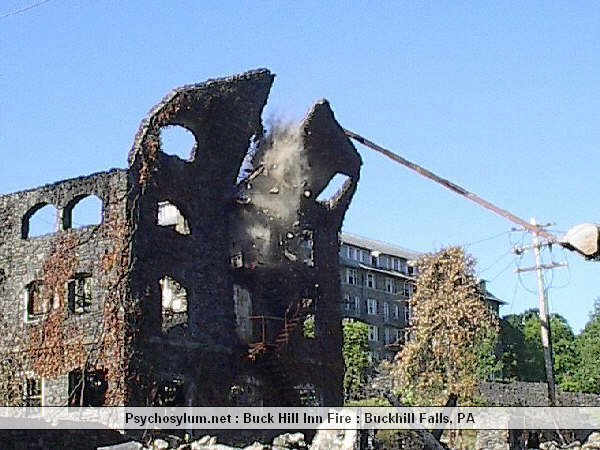

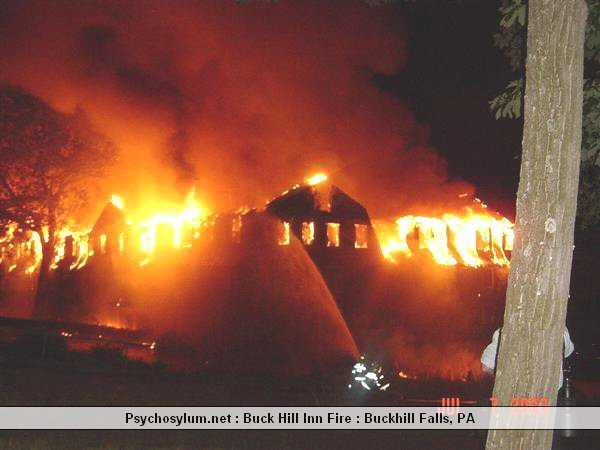
Haunted or Hyped?
So, was The Inn at Buck Hill Falls truly haunted? The stories are compelling, but the evidence is thin. No police reports or newspaper archives confirm the murders or suicides MTV and urban legends describe. Staff from the Inn’s final years, like a front desk clerk who worked there in 1989-1990, recall no hauntings—just a warm, bustling place. Yet, the Poconos have a knack for ghost tales, and the Inn’s abandonment, paired with its dramatic portrayal on Fear, gave those tales fertile ground.
Maybe the real haunting was psychological: a grand old building left to rot, its silence inviting us to fill it with stories. As Kirkhuff put it, “If you believe in ghosts, you may think it’s haunted.” For some, that belief was enough. Today, the Inn is gone, but its legend lingers in the Pocono air—a mix of history, hype, and human imagination. What do you think: was it a house of spirits or just a house of shadows?


Excellent article. The real history of the place is fascinating and all the supernatural stuff, while entertaining, is pure bunk. It’s a shame the place wasn’t saved but so be it.